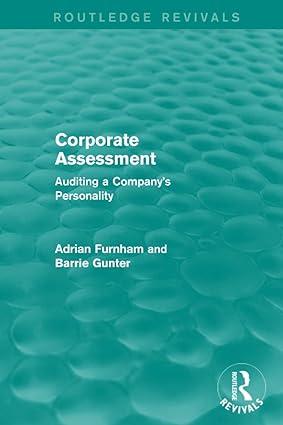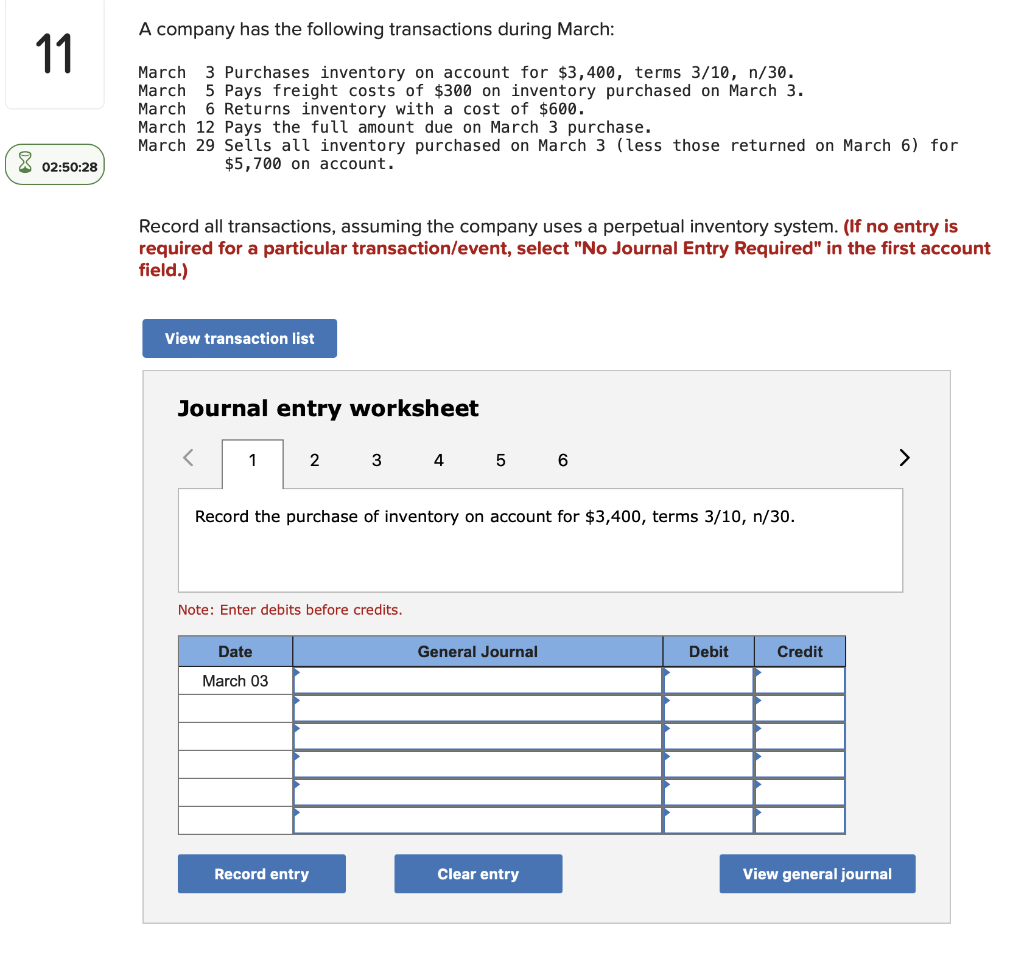
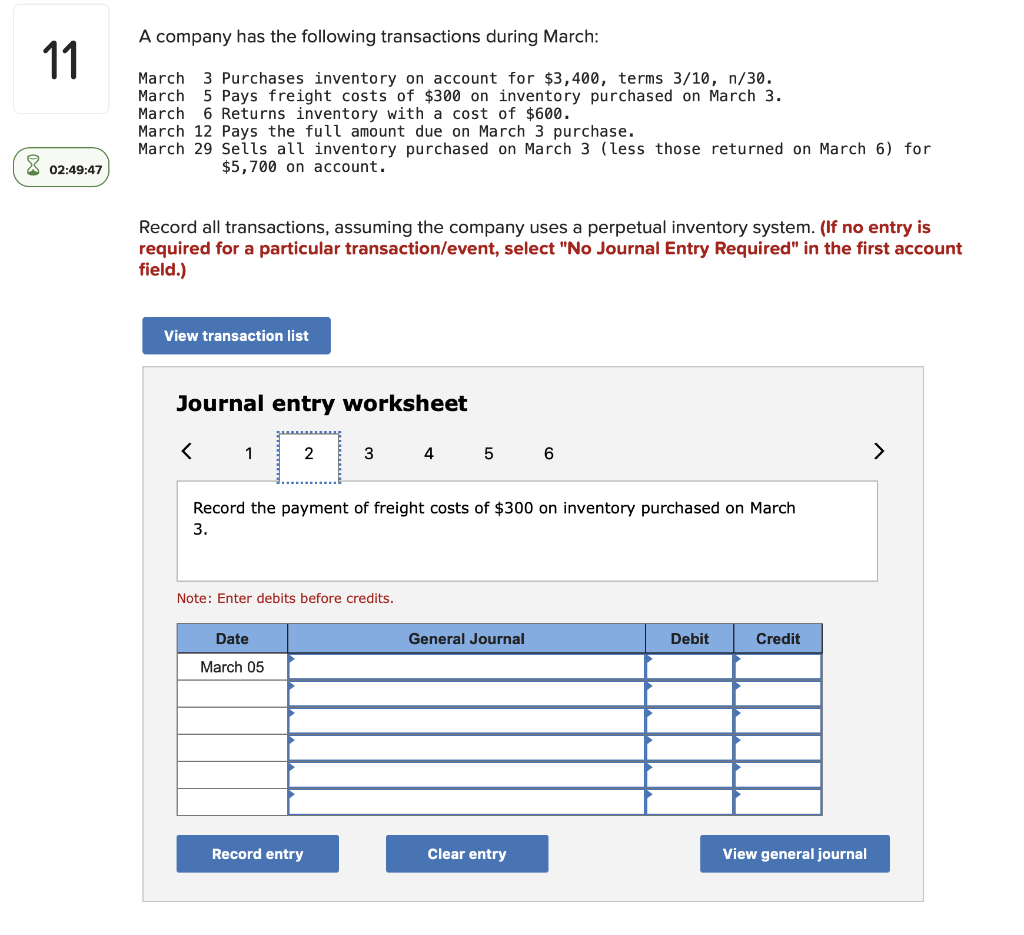
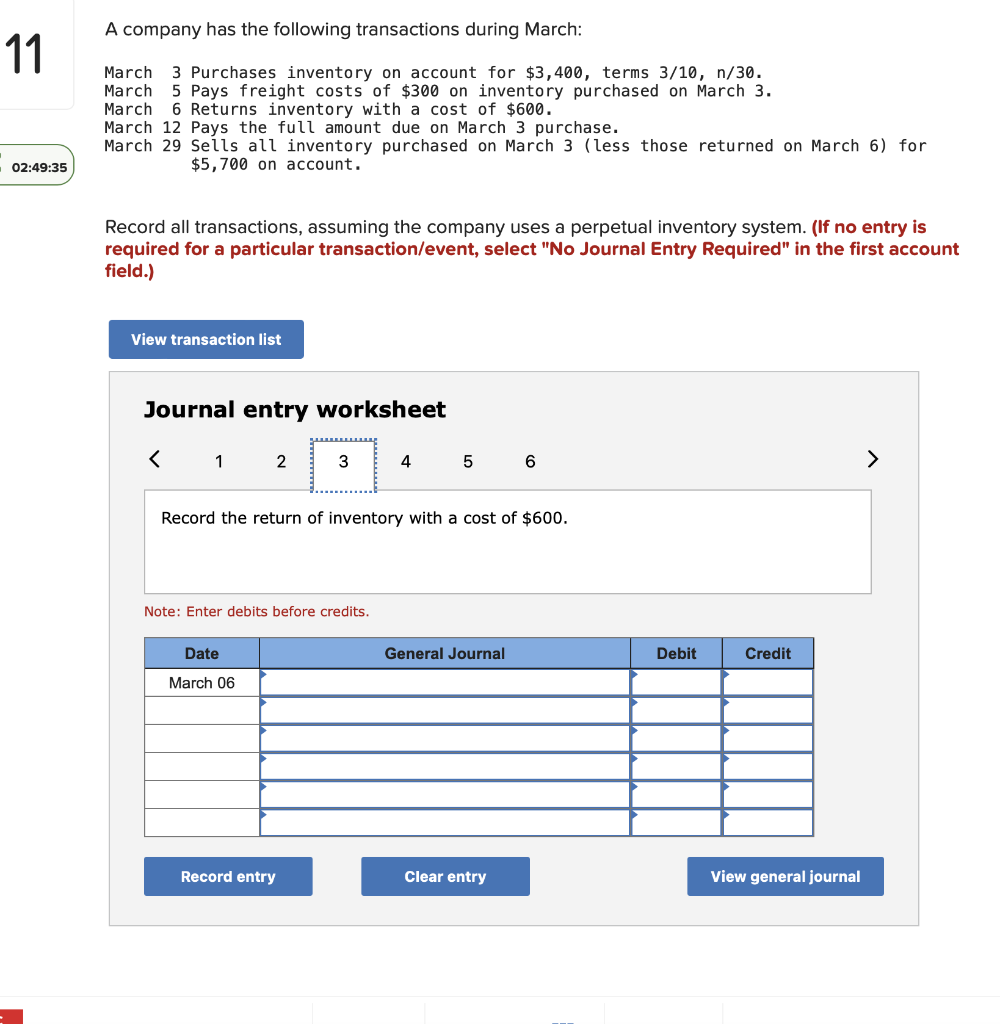
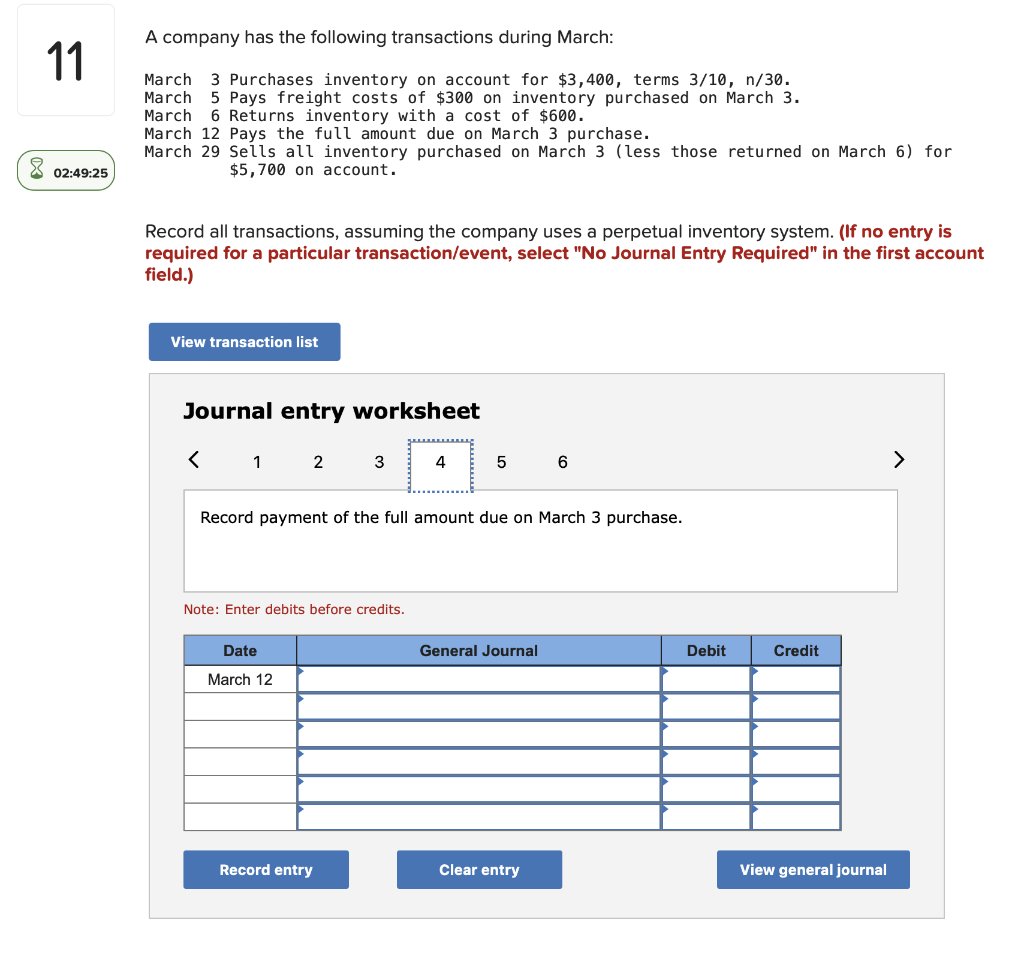
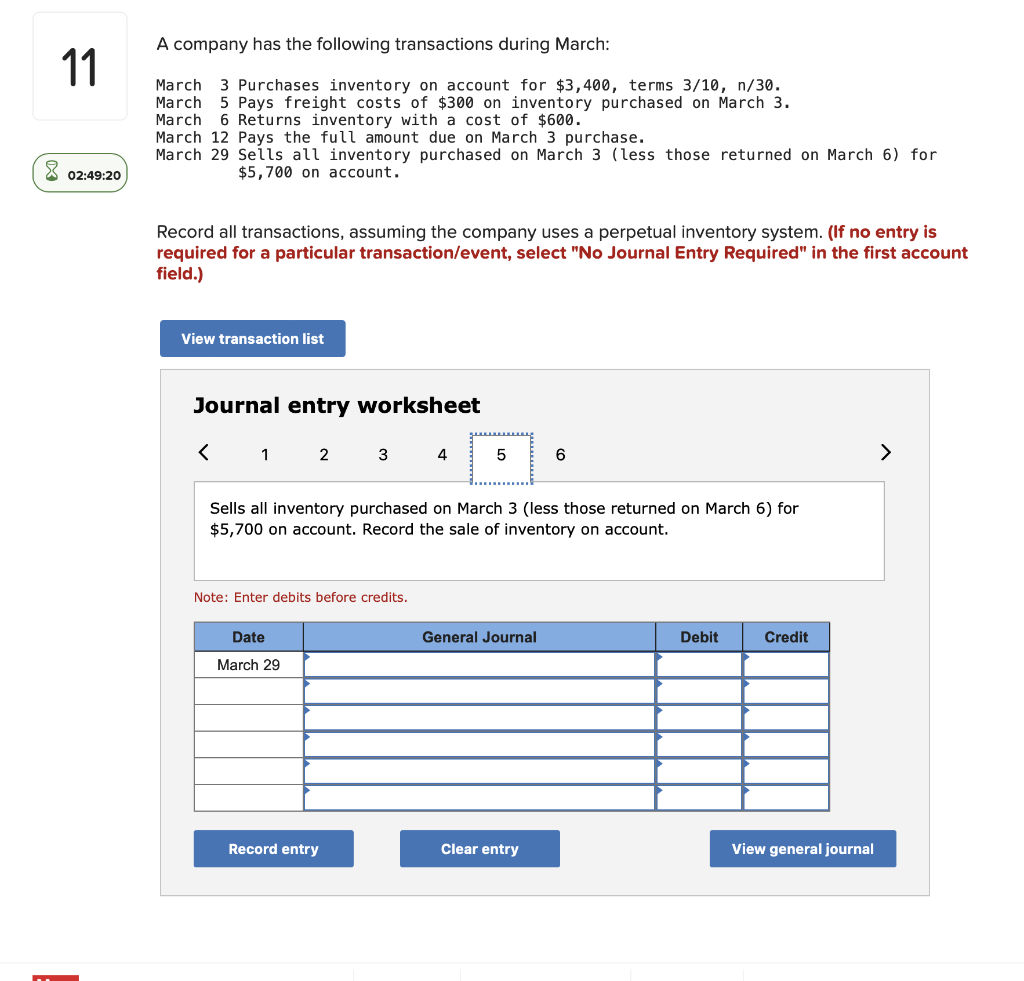
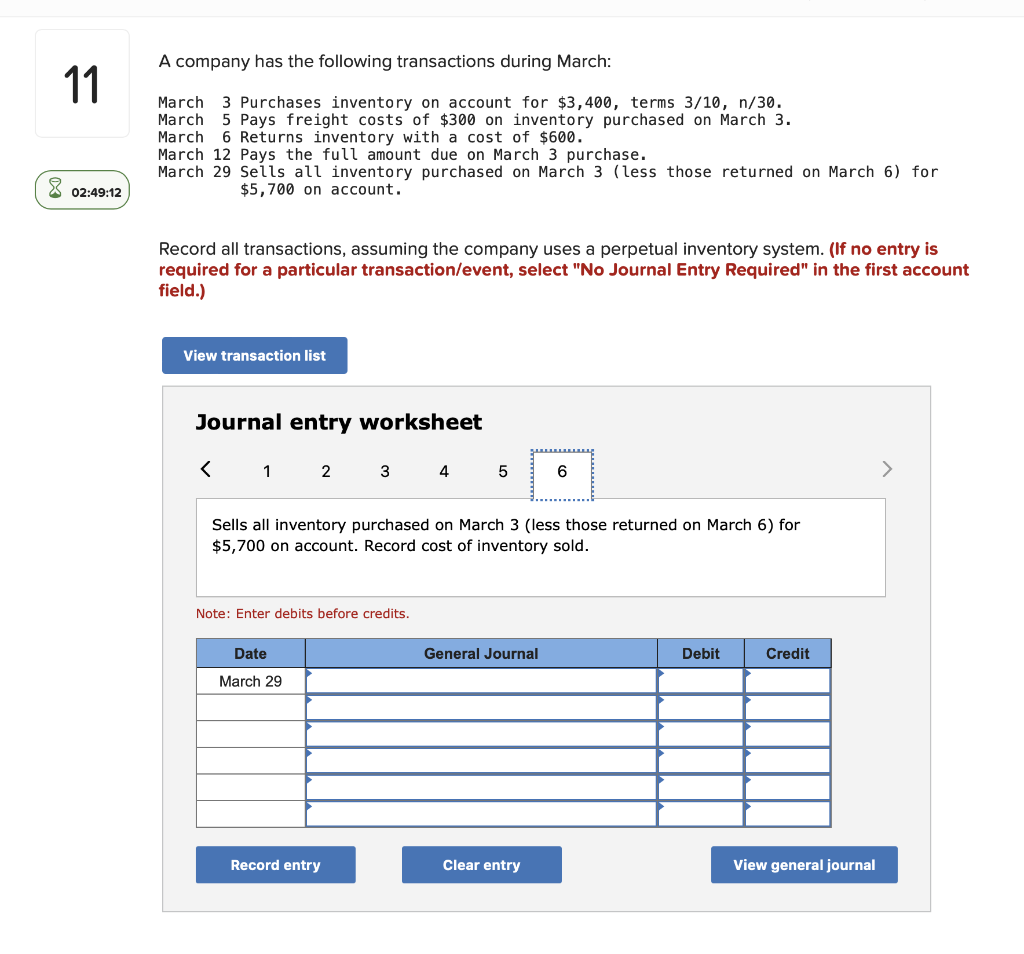
A company has the following transactions during March: 11 March 3 Purchases inventory on account for $3,400, terms 3/10, n/30. March 5 Pays freight costs of $300 on inventory purchased on March 3. March 6 Returns inventory with a cost of $600. March 12 Pays the full amount due on March 3 purchase. March 29 Sells all inventory purchased on March 3 (less those returned on March 6) for $5,700 on account. 02:50:28 Record all transactions, assuming the company uses a perpetual inventory system. (If no entry is required for a particular transaction/event, select "No Journal Entry Required" in the first account field.) View transaction list Journal entry worksheet Record the purchase of inventory on account for $3,400, terms 3/10, n/30. Note: Enter debits before credits. Date General Journal Debit Credit March 03 Record entry Clear entry View general journal A company has the following transactions during March: 11 March 3 Purchases inventory on account for $3,400, terms 3/10, n/30. March 5 Pays freight costs of $300 on inventory purchased on March 3. March 6 Returns inventory with a cost of $600. March 12 Pays the full amount due on March 3 purchase. March 29 Sells all inventory purchased on March 3 (less those returned on March 6) for $5,700 on account. 02:49:47 Record all transactions, assuming the company uses a perpetual inventory system. (If no entry is required for a particular transaction/event, select "No Journal Entry Required" in the first account field.) View transaction list Journal entry worksheet Record the payment of freight costs of $300 on inventory purchased on March 3. Note: Enter debits before credits. Date General Journal Debit Credit March 05 Record entry Clear entry View general journal A company has the following transactions during March: 11 March 3 Purchases inventory on account for $3,400, terms 3/10, n/30. March 5 Pays freight costs of $300 on inventory purchased on March 3. March 6 Returns inventory with a cost of $600. March 12 Pays the full amount due on March 3 purchase. March 29 sells all inventory purchased on March 3 (less those returned on March 6) for $5,700 on account. 02:49:35 Record all transactions, assuming the company uses a perpetual inventory system. (If no entry is required for a particular transaction/event, select "No Journal Entry Required" in the first account field.) View transaction list Journal entry worksheet Record the return of inventory with a cost of $600. Note: Enter debits before credits. Date General Journal Debit Credit March 06 Record entry Clear entry View general journal A company has the following transactions during March: 11 March 3 Purchases inventory on account for $3,400, terms 3/10, n/30. March 5 Pays freight costs of $300 on inventory purchased on March 3. March 6 Returns inventory with a cost of $600. March 12 Pays the full amount due on March 3 purchase. March 29 sells all inventory purchased on March 3 (less those returned on March 6) for $5,700 on account. 02:49:25 Record all transactions, assuming the company uses a perpetual inventory system. (If no entry is required for a particular transaction/event, select "No Journal Entry Required" in the first account field.) View transaction list Journal entry worksheet Record payment of the full amount due on March 3 purchase. Note: Enter debits before credits. Date General Journal Debit Credit March 12 Record entry Clear entry View general journal A company has the following transactions during March: 11 March 3 Purchases inventory on account for $3,400, terms 3/10, n/30. March 5 Pays freight costs of $300 on inventory purchased on March 3. March 6 Returns inventory with a cost of $600. March 12 Pays the full amount due on March 3 purchase. March 29 Sells all inventory purchased on March 3 (less those returned on March 6) for $5,700 on account. 8 02:49:20 Record all transactions, assuming the company uses a perpetual inventory system. (If no entry is required for a particular transaction/event, select "No Journal Entry Required" in the first account field.) View transaction list Journal entry worksheet Sells all inventory purchased on March 3 (less those returned on March 6) for $5,700 on account. Record the sale of inventory on account. Note: Enter debits before credits. Date General Journal Debit Credit March 29 Record entry Clear entry View general journal A company has the following transactions during March: 11 March 3 Purchases inventory on account for $3,400, terms 3/10, n/30. March 5 Pays freight costs of $300 on inventory purchased on March 3. March 6 Returns inventory with a cost of $600. March 12 Pays the full amount due on March 3 purchase. March 29 Sells all inventory purchased on March 3 (less those returned on March 6) for $5,700 on account. 02:49:12 Record all transactions, assuming the company uses a perpetual inventory system. (If no entry is required for a particular transaction/event, select "No Journal Entry Required" in the first account field.) View transaction list Journal entry worksheet Sells all inventory purchased on March 3 (less those returned on March 6) for $5,700 on account. Record cost of inventory sold. Note: Enter debits before credits. Date General Journal Debit Credit March 29 Record entry Clear entry View general journal












